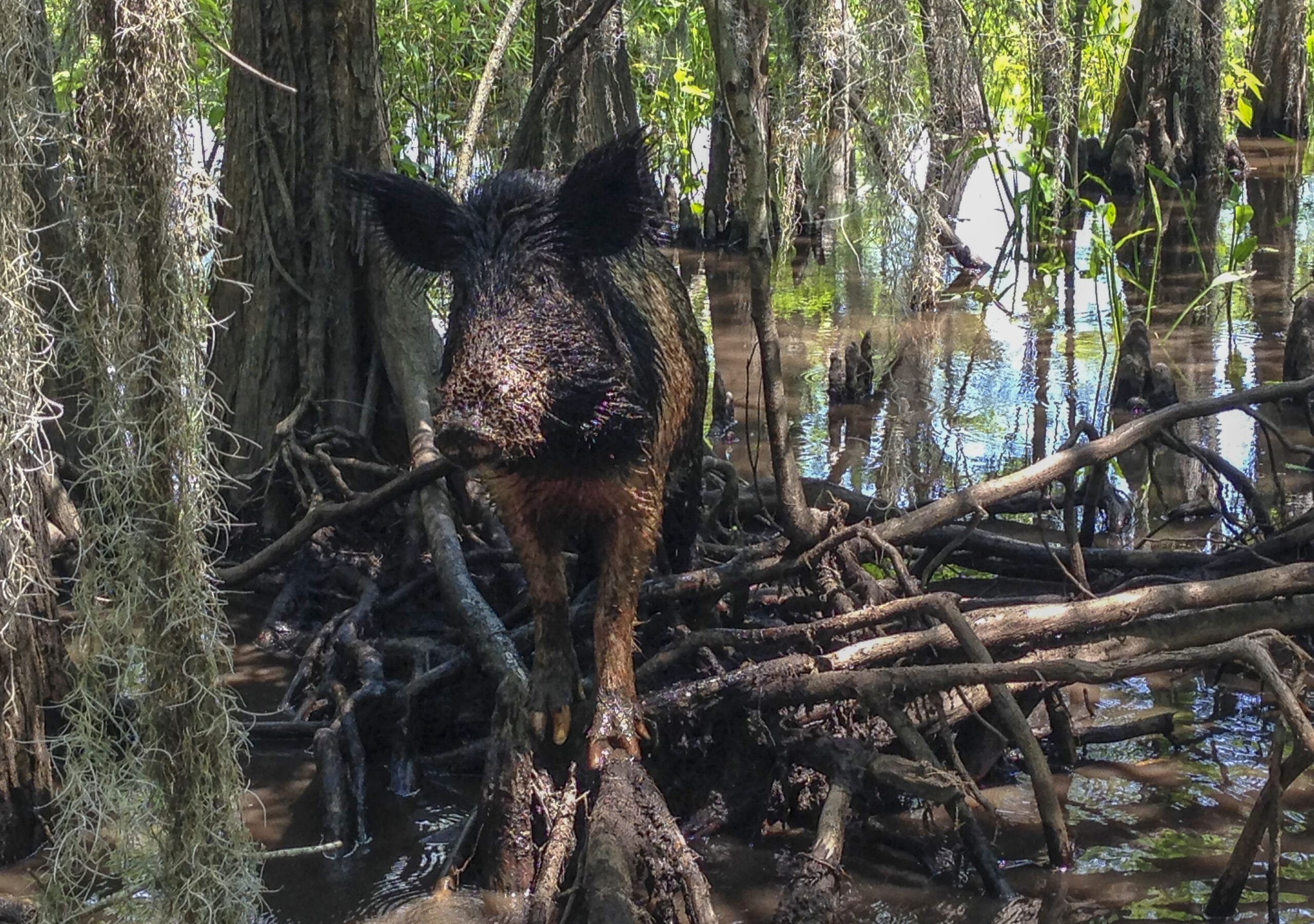COMMENTARY BY DR. DAVE SAMUEL
Feral hogs are an exotic, introduced species that arrived on our shores via domestic pigs brought to our shores by Spanish Explorer Hernando DeSoto in the 1500s. These feral hogs proved to be very adaptable and did well in the salt marshes of Georgia and South Carolina.
In addition to feral hogs, we also have Russian wild boars in this country. They were brought here in the 1900s for the purpose of sport hunting. More on these in West Virginia below.
Hogs have a few assets. They are fun to hunt, and a challenge with the bow. And, they are great eating. That’s why, from a harvest number standpoint, hogs are second in the country right behind whitetails. With that kind of popularity, it is no wonder that one of the ways hog populations get started in an area is via releases by hunting clubs and others, even though that is illegal in many states.
When it comes to bowhunting and good eating, I’m a fan of wild hogs. Those hogs in the salt marshes of South Carolina and Georgia are still doing great and make a fun bowhunt. They thrive on the small clams when the tide goes out, making stalk hunting muddy, but possible. I used to make yearly winter trips there just to get pork in my freezer. Some good memories.
Even though some like hunting hogs, a much larger majority of people want to get rid of them. Over the past years, wild hogs have gone hog wild simply because sows can breed at eight months of age and produce at least two litters of eight to 12 piglets a year. Today there are an estimated four million porkers in 45 states and four Canadian provinces and those numbers just keep growing, though not in West Virginia. Feral hogs in West Virginia occur in several localized populations because domestic swine have escaped or people have released them hoping to start a huntable population. Thankfully that has not occurred.
In 1982, wild hogs were limited to parts of Texas and the coastal areas of Alabama, Georgia, and the southern half of Florida. There were also isolated pockets of hogs in California, Tennessee, and South Carolina, but that was about it. Boy, have things changed since that time. Today 10 states (Alabama, Arkansas, California, Florida, Georgia, Louisiana, Mississippi, Oklahoma, South Carolina and Texas) have some of the highest feral swine population densities, and with that comes millions in damage. I might add that of the estimated six to eight million hogs found in the United States, half live in Texas and damage there is huge.
Wild hogs root for food, doing tremendous damage to crops, yards, and forests. Wet areas seem particularly vulnerable to damage. Peanut, corn, and soybean crops are hit particularly hard in Texas and the Southeast and one estimate of yearly damage is one billion dollars. Economic damages are bad, but there are other problems. Wild hogs carry a number of viral and bacterial diseases and parasites that impact livestock, wildlife, and humans. How about leptospirosis, trichinosis, salmonellosis, just to mention a few?
Nationwide, things have gotten so bad that in 2014, in response to the increasing damage and disease threats posed by expanding feral swine populations in the United States, Congress appropriated $20 million to the United States Department of Agriculture’s Animal and Plant Health Inspection Service (APHIS) for the creation of a collaborative, national feral swine damage management program.
One part of that program is an eradication program that is active in most states where wild hogs are found. Wildlife Services, a federal agency, works out of Elkins and over recent years has removed several hundred feral hogs in West Virginia, the majority of which have come from Mason and Jackson counties.
In 1971, 30 hybrid Russian hogs were taken from the DNR game farm near Buckhannon and released in southern West Virginia (Logan and Boone counties). It was thought that they would provide hunting recreation in that area while not growing in numbers and spreading all over the state. Indeed, that is what has happened. In more recent years, at least one release of feral hogs has also taken place in southern West Virginia and some cross-breeding has taken place.
Numbers of hogs in southern West Virginia have grown slowly, but for the most part, hogs are still located in four counties in the general areas where they were released. The annual harvest is usually less than 100 animals.
Studies show that you must remove 70 percent of the hogs from an area each year just to keep the population. Porkers are prolific, adaptable animals that eat most anything. Things today are fairly stable. When feral hog sightings are reported, Wildlife Services traps as many as possible, and numbers remain low. Hopefully, we’ll keep those small pockets of pigs at low numbers so we do not become the next state where hog numbers are going wild.




